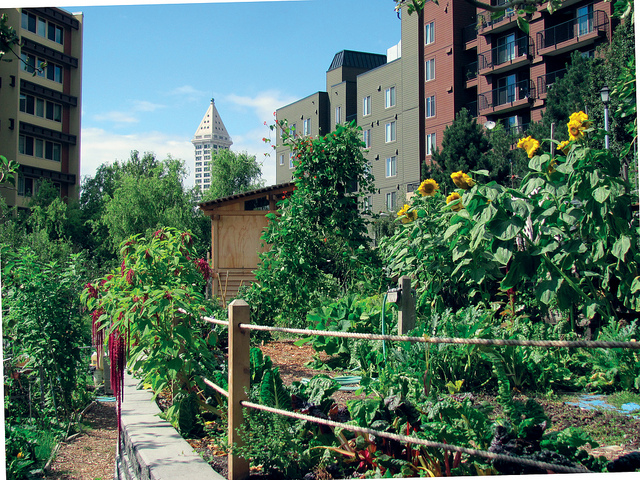The Ultimate Guide To City Blooming
Table of ContentsHow City Blooming can Save You Time, Stress, and Money.10 Simple Techniques For City BloomingSee This Report on City BloomingNot known Details About City Blooming The 45-Second Trick For City Blooming
Fascinated in expanding food for sale in the City of Chicago? Below is a list of often asked concerns regarding the policies and laws that cultivators need to consider when preparing a metropolitan agriculture task.
The zoning change does not customize any type of various other codes managing composting, structure licenses, buying or renting City possessed residential property, company licenses or ecological contamination. There are existing codes that manage these problems and they continue to be completely result and might be relevant to your job. Community yards are usually owned or taken care of by public entities, public companies or community-based companies and kept by volunteers.
Urban ranches grow food that is intended to be marketed, either on a not-for-profit or for-profit basis. Due to their commercial purpose, metropolitan ranches call for an organization certificate.
Things about City Blooming
Composting is permitted yet just for plant material that is produced and utilized on site. The amount of garden compost material can not go beyond 25 cubic lawns at any given time according to the criteria in 7-28-715 of the City's Municipal Code. Yes. Because the soil at a lot of new yard sites needs amending, garden compost, soil, timber chips, or various other materials can be acquired to build or boost the expanding area - sustainability.

If a building permit is needed after that the hoophouse will be taken into consideration an accessory building. You can learn even more regarding the building authorization demands by speaking to the Department of Buildings. The 25,000-square-foot dimension limitation is intended to stop a solitary neighborhood yard from controling a given block or diminishing the block's existing property or commercial character.
The restriction does not use to gardens found in Public Open Area (POS) districts. Can there be greater than one area garden that is 25,000 square feet on a solitary block? Yes. The size limit relates to specific gardens, not to specific blocks. No. Secure fencing is not called for, however, gardens that have big parking areas might be required to mount fencing or various other landscaping attributes.
A Biased View of City Blooming
B1 & B2 areas require that all industrial usage tasks be carried out indoors. R districts limit business task. The regulations show the purpose and intent of the Zoning Code. Is fence needed for urban farms? Yes. Fences may be required, in addition to landscape design and testing, for specific parking areas and outdoor work or storage areas depending on area and the certain task occurring.
Urban farms require structure permits and zoning authorizations prior to building and construction (sustainability). Other types of city testimonial might be called for depending on particular structures, tasks, size, landscaping, licensing, public health and stormwater monitoring concerns.
Yes. The kind of certificate is identified by what is occurring at the website. The Division of Business Matters and Customer Defense can assist establish the details type of service certificate that's needed. Yes. Off road parking is required for the majority of commercial jobs in Chicago. The required variety of garage is based upon the number of staff members working on site and not the square video of the expanding room.
More About City Blooming

A city farm can offer compost product produced on website, however, the operation should comply with the policies in 7-28-715 of the Chicago Municipal Code. Aquaponic systems are enabled inside your home on city farms in many zoning areas.
Up to 5 hives or swarms of honey may be maintained as an accessory usage. However, beekeepers should sign up with the Illinois Division of Agriculture. To find out more regarding the proposed zoning change you may call the Division of Housing and Economic Growth, Bureau of Preparation and Zoning at 312.744.8563.
Farming in cities and city areas A metropolitan ranch in Chicago. Urban agriculture describes different practices of growing. https://packersmovers.activeboard.com/t67151553/how-to-connect-canon-mg3620-printer-to-computer/?ts=1719460146&direction=prev&page=last#lastPostAnchor, handling, and distributing food in metropolitan areas. The term also uses to the location activities of animal husbandry, tank farming, beekeeping, and cultivation in view website a city context. Urban farming is differentiated from peri-urban agriculture, which occurs in backwoods beside suburban areas.
Rumored Buzz on City Blooming
It can involve an activity of organic cultivators, "foodies" and "locavores", who seek to create socials media founded on a shared values of nature and community holism. These networks can establish using official institutional support, ending up being integrated right into local town planning as a "change town" movement for lasting city growth.
Some of the initial proof of metropolitan agriculture comes from Mesopotamia.